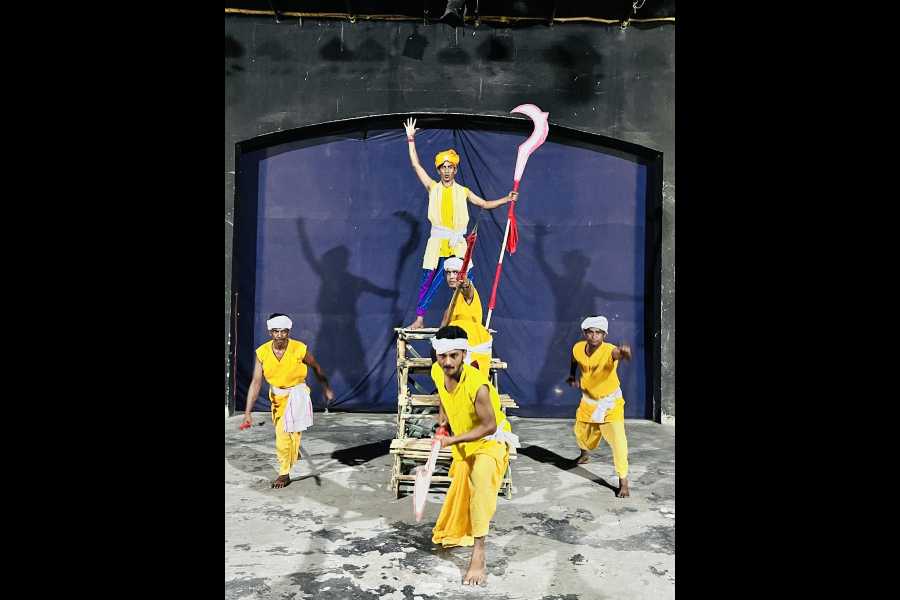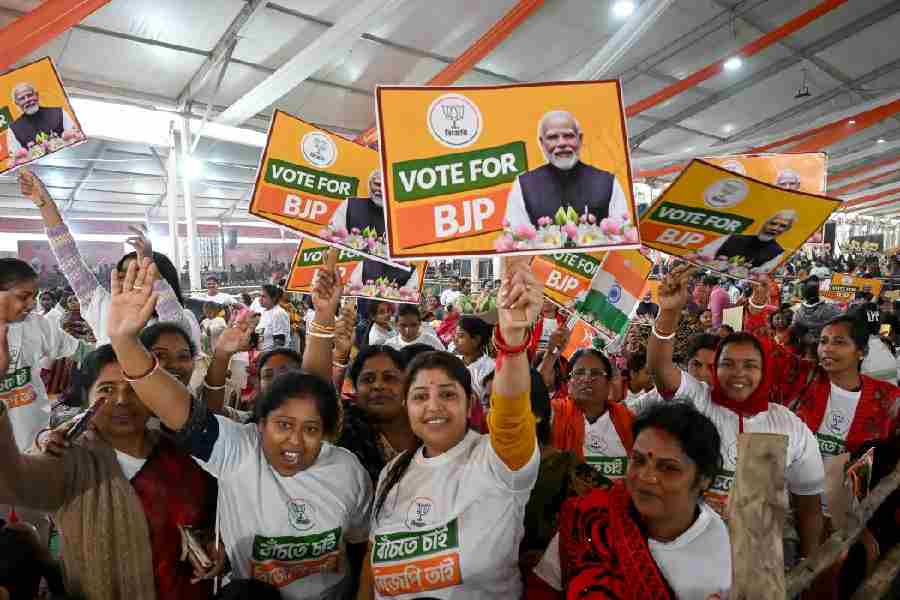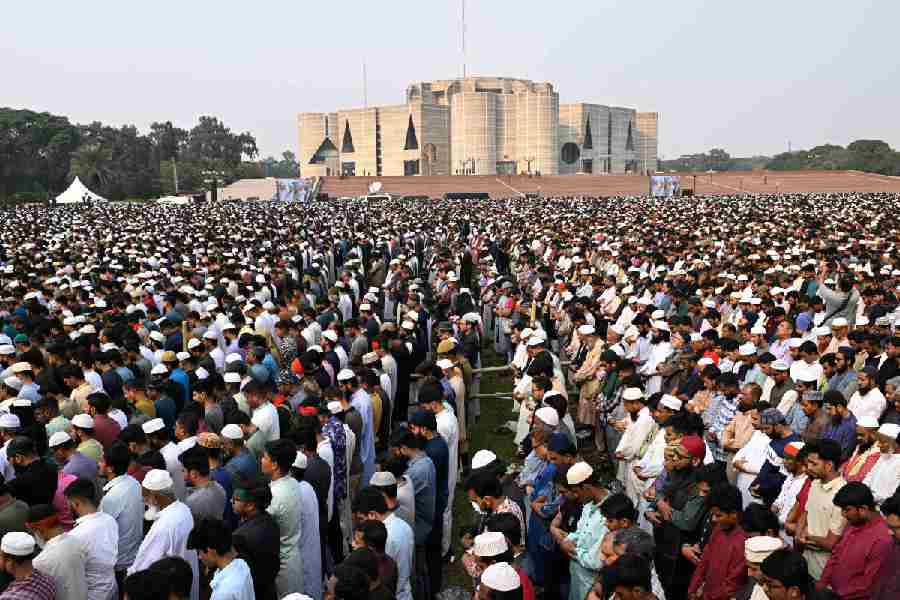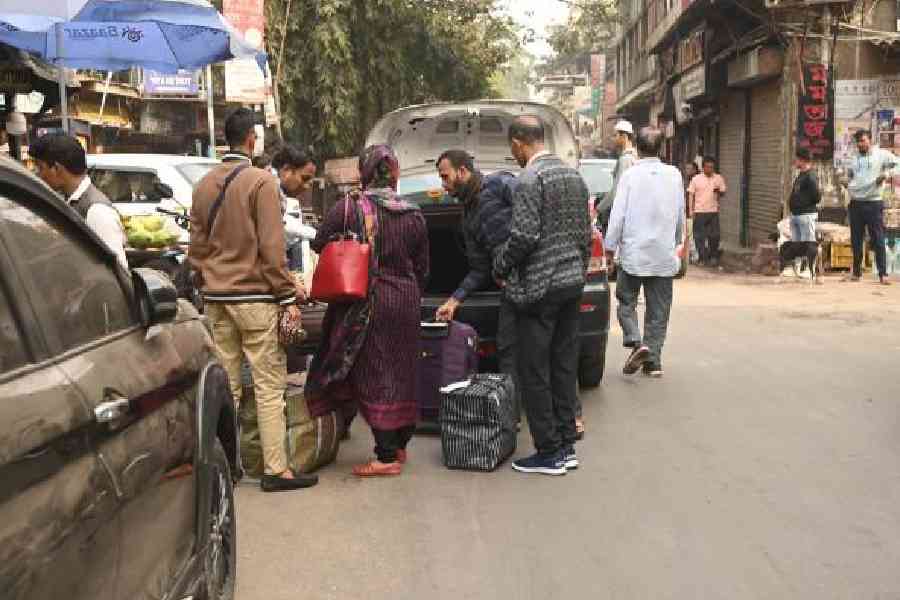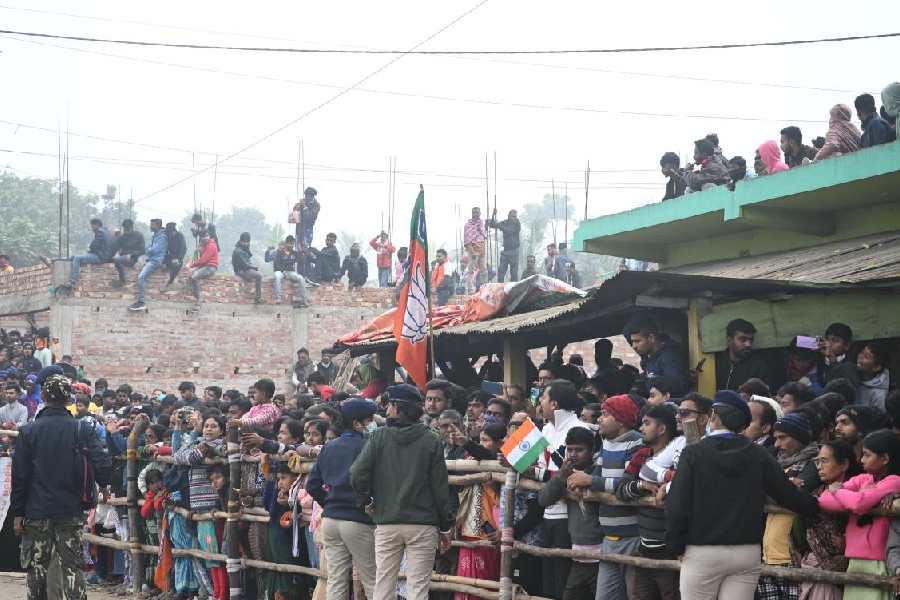Tepantor Theatre Village is in Satkahania in Bengal’s Birbhum district. Here, a local theatre group Ebong Amra is rehearsing their upcoming play Maharaja Sasanka. Sometime in April, they presented a preview at Calcutta’s National Library. The first full production was staged on June 14 at Tepantor.
The Bengali word tepantor is the name of a mythical field; across it lies any protagonist’s salvation, mostly avenging princes from fairy tales. Tepantor Theatre Village, founded by playwright Kallol Bhattacharyya, might be only 170 kilometres from Calcutta, but it too has tried to offer salvation to many.
Satkahania used to be a “neglected village” on the edge of Bankati forest. The population was and remains, majorly, a mix of Scheduled Tribes and Scheduled Castes, most of them working as farmhands or fishermen. Others work as daily wagers at brick kilns and sand mines along the Ajay river.
“In the 1940s, when my great-grandfather came here, there were no schools. He founded the Ajodhya Primary School,” Bhattacharyya had said to me over the phone before I embarked on my trip.
I land in Tepantor a week after the performance at National Library.
It is late afternoon. After a quick meal, some tea and a tour of Satkahania, I am ushered into what is referred to as the “auditorium”. The theatre village is spread over four acres, it has two cottages, a couple of guesthouses, one large and one small auditorium, a kitchen and residences for staff. It has come up bit by bit over the last 25 years.
Bhattacharyya formed Ebong Amra in 1994. He co-opted villagers of Satkahania as well as neighbouring Bankati, Shyambazar, Basudha, Dangal and Ajodhya. The team constructed the village, brick by brick. The idea was to mix performing arts with community welfare. Tepantor would engage the youth in creative pursuits and also teach them life skills, help them make a livelihood — from livestock, from tourism, from fishing...
“Currently, we have 30 members. Of them, 15 live on the Tepantor premises and are full-timers,” Bhattacharyya had said.
Back to the auditorium. A middle-aged man dressed in kurta-pyjama is addressing 20 to 25 men and women seated on the floor. The man turns out to be Bhattacharyya, and it is a congregation of actors, their ages ranging from 15 to 45.
He is telling them about Sasanka. “A king who took Bengal to its heights, a contemporary of Harshavardhana… Banabhatta, the court poet of Harshavardhana, mentions him in the Harshacharita; but Sasanka is now erased from the memory of the people.”
The two auditoriums come alive with rehearsals in the second half of the day.
The stage is stark. Two young women dressed in salwar kameez are enacting a village scene. Five men dressed in t-shirts and track pants are meant to be farmers tilling the land. Suddenly, two men rush in from the wings and attack them with wooden spears and swords. “It is that period of Bengal when there were no leaders and Bengal was under brutal attacks from the Huns,” says Bhattacharyya by way of explanation.
Next scene. A tall and well-built man makes a rushed entry. He has a sickle-like weapon in his hand and he looks around and upon the ravages of war — about five actors are lying on stage, playing the dead and the injured. The tall man is playing Sasanka.
The rehearsal is enjoyable for more than one reason. I am watching a transformation unfold right before my eyes. That fierce Hun is none other than Tapas Sarkar, who had earlier taken me on a tour of Satkahania. And Sasanka of the deep voice is the shy Mithun Sarkar, who had fetched me a cup of tea upon my arrival. The dialogues are in Bengali, with an overtone of the Rarhi dialect spoken in Birbhum and Burdwan districts.
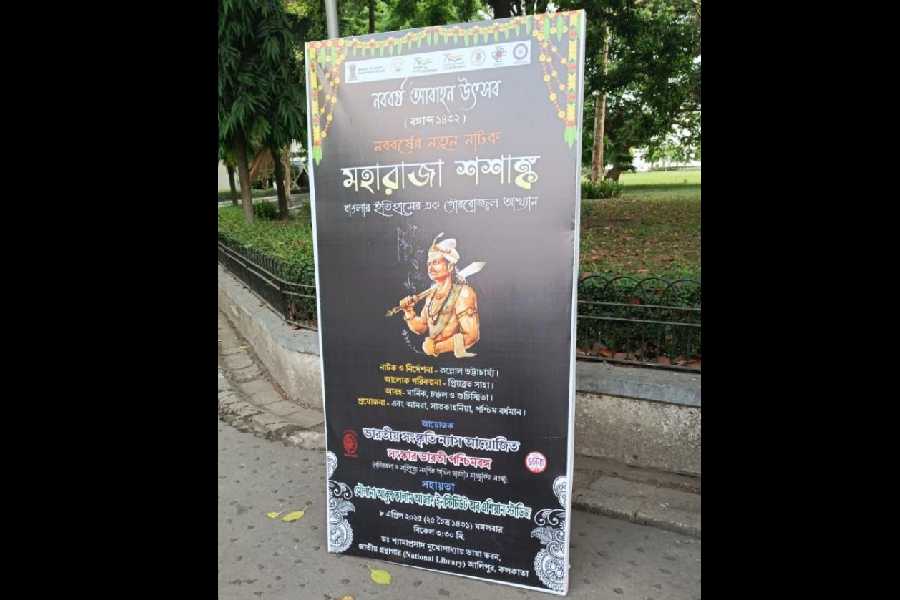
“More than one actor has played Sasanka in our play, depending on which phase of his life is being portrayed. I have chosen them based on their build and skill in the martial arts,” says Bhattacharyya.
It is not as if the group was formed and suddenly everyone grew acting skills. Actors had and still have to attend workshops for martial arts, folk music and dance, art and craft, and wood carving. For this particular play, they have trained in Kalaripayattu, Raibeshe and Chhau dance forms. Actors have also learnt the Manipuri martial art Thang Ta. Then there are workshops in history, book reading sessions; Bhattacharyya has fashioned a comprehensive and continuous training programme. His daughter Suchismita is the choreographer.
Chanchal Bagdi, 45, is a musician. He tells me, “This place is now well-known. In 2005, a theatre group named Flying Fish came from Berlin. Then in 2008, the Russian Academy of Theatre and Arts.” Bagdi talks about their tours to Dhaka too.
Back to Sasanka. Bhattacharyya says, “Though Maharaja Sasanka established the Gauda kingdom, very little has been documented.”
Some portray him as a tyrant, others as an able king. Bhattacharyya’s interpretation is this: “He was an able warrior and a clever diplomat.”
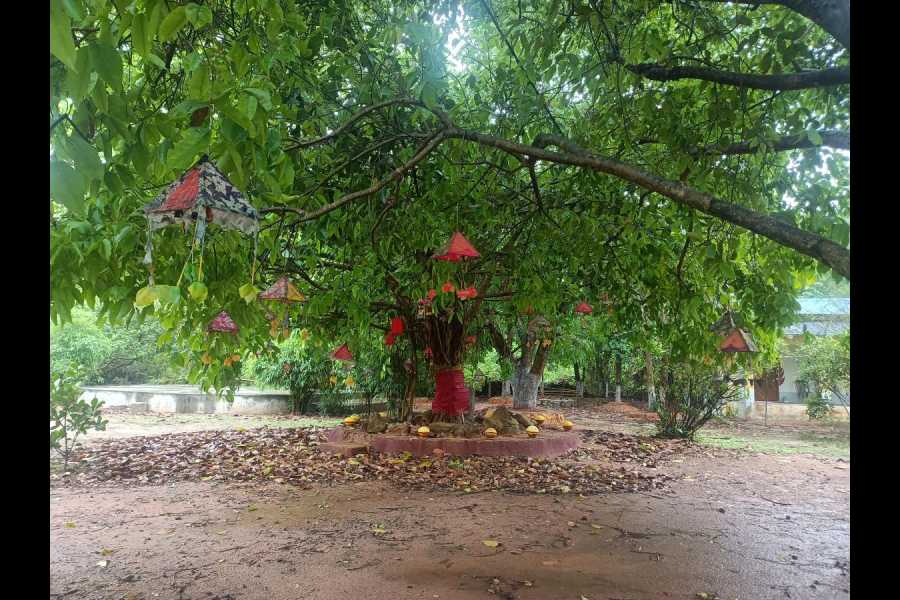
Maharaja Sasanka, a play by the theatre group Ebong Amra at Tepantor Theatre Village is in Satkahania in Bengal’s Birbhum district. Photo by Moumita Chaudhuri
Bhattacharyya goes on. “Sasanka was a chieftain and a feudatory of the Gupta Empire. His real name was Narendragupta. Back then, Kannauj was considered to be a political power centre and it was ruled by Grahavarmana. Sasanka decided to overthrow Grahavarmana and capture Kannauj.”
Grahavarmana’s brother-in-law was Rajyavardhana. So it was natural that Rajyavardhana tried to avenge his death but Sasanka killed him by guile. Later, Harshavardhana attacked Kannauj. History does not document the outcome of the war, nor does Bhattacharyya’s play.It ends where the war begins. Sasanka died in 637 AD after ruling over Bengal for 33 years.
“People say he had demolished Buddhist structures and cut down a Bodhi tree. But that is Banabhatta’s version. Historian R.C. Majumdar refutes it. If Sasanka had a court poet, we would have known the other side of the story too,” Bhattacharyya adds.
To Bhattacharyya, Sasanka is this great heroic figure from Bengal. He says, “People talk about Shivaji and Maharana Pratap. We decided to resurrect Sasanka as people were playing up regional heroes on the occasion of the 75th Independence Day celebration.”
As he puts it, this is very much in keeping with the Tepantor tradition of doing historical plays. He says, “We have done a play, Mahakabyer Pore, based on the
Mahabharata.”
Be it his adaptation of Oedipus or Macbeth, Bhattacharyya’s productions somehow speak to contemporary society, highlight unchanging human foibles.
There are other plays in the works, also based on the lives of regional heroes. One is on Pyarimohini Devi, who led an armed fight against the British indigo sahibs. The other is Rani Siromoni of Karnagarh, who fought the East India Company and was the first woman political prisoner of Bengal.
Bhattacharyya says, “It is good to look back at Maharaja Sasanka now when Bengal is lagging in every sphere — unemployment rate is high, the health and education systems are deteriorating. Bengalis have suddenly become timid — they do not protest or fight. I want to shake people out of this state of mind.”
The banyan tree outside the auditorium comes alive with colourful lights emanating from the paper lanterns hanging from its branches. They shine on the painted rocks and pots decorating the tree base.
A voice backstage breaks out in narration: “Maharaja Sasanka had once lifted
Bengal from its low point. Now, when Bengal is again on the downward slide, we need another Sasanka. Or, maybe, the need of the hour is that each one of us becomes a Sasanka…”

